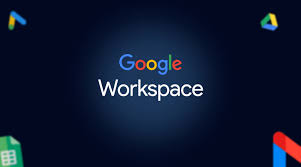Is your PC running slow? Maybe you’ve tried optimization software and investigated all the common solutions, but nothing seems to be working. In that case, it’s time to upgrade some of your hardware.
But which components, exactly? Where should you start? Which upgrades will give you the best bang for your buck, and which are a waste of time?
Although you should always tailor your upgrades to suit a particular need, here are the best upgrades to make in order of generalized importance.
RAM
Adding more memory is the easiest and most accessible PC upgrade you can make. It’s affordable, you can do it on almost any machine (including many laptops), and it doesn’t require much tech know-how.
If you’ve never cracked open your PC case before, then this is the place to start.
Upgrading RAM delivers an instant performance to almost all PCs that are running slow. For resource hungry tasks — like video editing or gaming — the more RAM you’ve got, the better. Even for casual use, extra RAM will enable you to have more apps running in the background and keep a greater number of tabs open in your browser.
So how much RAM do you need? 4 GB is currently the baseline amount, but you’ll notice a significant improvement if you upgrade to 8 GB. For heavier tasks, you should look to 16 GB for best results.
Graphics Card
We’ve got this second on the list, but if you’re a serious gamer then it should probably be the first thing you upgrade. If you aren’t a serious gamer, 3D modeler, or 3D animator, then you probably won’t ever need to upgrade it at all.
Skimping out on graphics is an easy way to save on costs, so PC manufacturers tend to go with integrated graphics cards rather than dedicated graphics cards. If you have an integrated card, then moving up to a dedicated one will work wonders.
Despite the fact that integrated graphics performance has been improving, even a good one is about the equivalent of a $100 dedicated graphics card. Upgrading to something like an Nvidia GTX 960 card for around $200 will give you a big boost in most cases.
You can compare the performance of dedicated cards against your current option at gpu.userbenchmark.com.
Data Drive
There are two reasons to upgrade your hard drive: you’re running out of space or you want faster performance.
If you’ve done everything you can to free up your hard disk storage and still regularly run out of space, then you will need to swap it out for a larger one. Not only does a full hard drive make it impossible to save new data, but it can also impact performance. At the very least, try to keep 10 GB of free soace for the operating system to use.
For hard disk drives, consider upgrading the physical speed. If your PC currently has a 5400 RPM drive, then upgrading to a 7200 RPM model will give you a nice speed boost.
But the fastest option is to switch to a solid state drive. These use flash memoryinstead of a spinning disk and are many times faster than a typical hard disk drive. (Not to mention more reliable, too.)
On average, a 5400 RPM drive might achieve speeds up to 100 MBps, a 7200 RPM drive up to 150 MBps, and a solid state drive over 500 MBps. The newest models can even go considerably faster. The downsides to solid state drives are that they have much smaller capacities and are more expensive than hard disk drives.
Ultimately, a faster data drive means faster boot times, faster program loading times, faster boot times for games, and more responsiveness in programs that use large files (like video editing or RAW photo editing).
If you don’t want to compromise on size, a hybrid drive combines the best of both worlds. These have a small amount of flash memory — where your most commonly used files are cached for instant retrieval — and a traditional hard disk that provides large capacity for storing long-term data.
Processors
Upgrading your PC’s processor is a far more advanced task than the other upgrades we’ve covered so far. Not only is it physically trickier if you’re doing it yourself, it’s one of the more expensive upgrades and there are compatibility issues to worry about, too.
Of course, there are compatibility issues with the other upgrades as well, but they’re much easier to negotiate. More importantly, a processor upgrade isn’t always a good thing and may not bring you the performance improvement you’re looking for.
The benchmark tests at cpubenchmark.net can help you compare the relative performances of different processors. In general, these tests show that modest updates don’t deliver big improvements. Other detailed tests show that a CPU’s performance varies hugely depending on the software on your system.
A processor is only worth upgrading if the upgrade is significant. But it’s expensive and may require you to upgrade your motherboard (and that might require you to buy new RAM). Even if your motherboard is compatible with a new processor on paper, it may need a BIOS update to work. It can be a pain, so check before you buy.
Ultimately, if your processor is the speed bottleneck in your system, you might want to consider buying a whole new system altogether. (Or you can save money by building a PC from parts instead.)
There Are No Miracle PC Upgrades
So, RAM, SSDs, and graphics cards are the most important things to upgrade. You should see real, instant improvements whenever you upgrade any combination of them.
Just don’t expect miracles. There will always be a bottleneck in your system. As soon as you replace the slowest part, something else will take its place. And as your computer ages, it’s important to be able to discern whether you should upgrade a single part or buy a whole new machine instead.



0 Comments